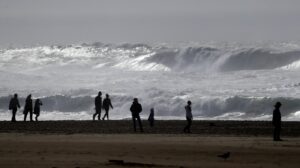
Recent studies have shed light on the construction and transportation of the iconic moai statues on Rapa Nui, also known as Easter Island, while also investigating the factors leading to the island’s deforestation. These findings reveal critical aspects of the island’s history, challenging long-held assumptions about the cultural practices of its early inhabitants.
Researchers from the University of California, Berkeley, have conducted extensive studies on the moai, which number nearly 1,000 and are renowned for their formidable size and distinct features. According to their research, the construction of these statues began around the 13th century and involved a complex process that combined both skilled labor and innovative techniques.
Unraveling the Construction Techniques
The studies indicate that the moai were carved from volcanic rock, specifically from the Rano Raraku quarry. This location provided the necessary materials for the statues, some of which weigh up to 82 tons. The researchers suggest that the Rapa Nui people used a combination of stone tools and wooden sledges to transport these massive structures across the island.
Additionally, experiments have shown that the moai could be moved upright, a technique that may have allowed the builders to navigate the challenging terrain of the island more effectively. This new understanding of the construction and movement process highlights the ingenuity of the Rapa Nui civilization.
Link to Deforestation
The studies also delve into the environmental consequences of these monumental projects. As the population of Rapa Nui grew and the demand for resources increased, the island experienced significant deforestation. The research indicates that the extensive use of trees for constructing sledges and transporting the moai contributed to a decline in forest cover. This loss of vegetation had far-reaching effects on the island’s ecosystem, ultimately leading to soil erosion and diminished agricultural productivity.
As noted in a report by National Geographic, understanding the interplay between the construction of the moai and environmental degradation is essential for comprehending the challenges faced by the Rapa Nui people. The findings stress the importance of sustainable practices in resource management to avoid similar outcomes in other regions.
The research conducted by the University of California, Berkeley, not only highlights the remarkable achievements of the Rapa Nui civilization but also serves as a cautionary tale about the consequences of environmental exploitation. This new perspective on the island’s history reshapes our understanding of its past and offers valuable insights for future sustainability efforts.
In conclusion, the studies on Rapa Nui’s moai statues and the island’s deforestation reveal a complex relationship between cultural achievements and environmental stewardship. As more information emerges, it becomes increasingly clear that the legacy of the Rapa Nui people is both a testament to human creativity and a reminder of the delicate balance between progress and nature.





